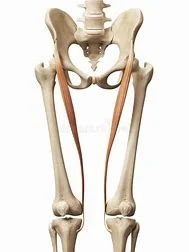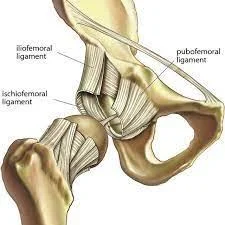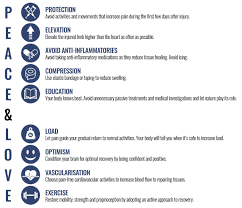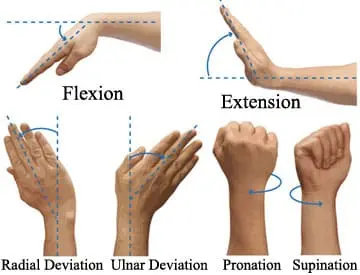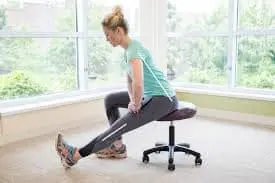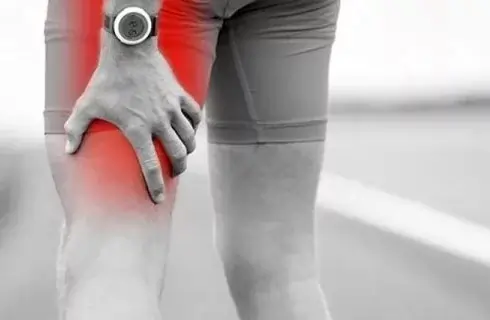20 Best Exercises Of Sartorius Muscle
The sartorius muscle, often referred to as the “tailor’s muscle,” is the longest muscle in the human body, running from the anterior superior iliac spine (ASIS) of the pelvis to the medial side of the tibia. This long, ribbon-like muscle plays a significant role in hip and knee flexion, as well as aiding in the rotation of the thigh and leg.
Strengthening the sartorius muscle can contribute to improved lower body stability, flexibility, and overall athletic performance.
Overview
- The sartorius muscle, which is often overlooked but extremely important, is the body’s longest muscle. It elegantly covers the outside of your hip to the inside of your knee, playing an important role in many movements.
- The sartorius muscle is located on both sides of the human body, starting at the ASIS (Anterior Superior Iliac Spine) of the pelvis. Beginning at the front of the thigh and angling inward, the sartorius muscle ends on the medial side of the tibia.
- Due to the sartorius muscle passing through two joints, the hip, and the knee, it influences motion in both.
The sartorius muscle serves the following functions:
- Hip flexion is the flexing of the hips while marching in place with high knees.
- Hip abduction is the movement of pulling the leg out from your midline, similar to taking a step to the side.
- External hip rotation: Turning the leg outside so that the thigh, knee, & toes face the side of the room.
- Flexing a knee allows for the heel to the gluteus.
- The tree poses of yoga are a representation of an exercise that requires all of the sartorius actions. To elevate the foot in the tree pose, flex the hip and knee.
Anatomy
- origin: directly below the anterior superior iliac spine.
- insertion: as a part of the tibial pes anserinus tendon, which is located at the tibial tuberosity’s anteromedial border.
- action:
- Primary: flexion of the hip as well as knee
- Secondary: lateral rotation along with limited abduction of the thigh (as when sitting cross-legged)
- Innervation: individual muscular branches from the anterior division of the femoral nerve (L2, L3, L4)
- Blood supply:
- The proximal third: comes from the femoral artery, profunda femoris, quadriceps artery, and lateral circumflex femoral artery.
- Middle third: branches of the femoral artery.
- distal third: branches of the femoral artery and descending genicular artery
What Are the Health Advantages of Sartorius Muscle Stretching?
There are some advantages you can gain. Those are:
- It expands the range of motion in the hip and knee joints, including hip flexion, abduction, external rotation, and knee flexion.
- It assists you while walking.
- It is also useful for cross-legged sitting positions.
- You can perform daily tasks more effectively if you don’t have sartorius tightness.
- It relaxes surrounding muscles because its origin, as well as insertion, covers two joints.
- It promotes blood circulation in the area.
- It increases muscle flexibility and mobility.
- Lower the risk of sartorius muscle pain.
What are the different types of sartorius stretching?
There are specific types of stretching you can do:
Stretching options include
- Kneeling stretch,
- Standing stretch,
- Butterfly stretch,
- Fire Log Pose stretch
Kneeling Stretch
- How to do this stretch: Kneel with your left knee on the floor and your right knee bent at a 90-degree angle in front of you, your foot flat on the ground. If necessary, you can support yourself against a wall to maintain your balance.
- Keep your spine upright and imagine the pelvis as a bucket filled with water.
- Your pelvis should remain neutral, not tilted forward or backward, to prevent the hypothetical water from overflowing.
- Lean forward, keeping your spine completely straight. Think of pushing the pelvis forward while keeping it level.
- Clenching the buttock muscles while performing can help you get a feel for the proper movement.
Pause the stretch for ten to thirty seconds, breathing normally while doing so, then gently release as well as repeat on the opposite side. Perform the kneeling stretch two to five times on each leg.
Standing Stretch
- How to do this stretch: Stand on your left leg. To maintain your balance, support yourselves against a strong piece of equipment.
- Place the right heel close to your buttocks.
- imagining pushing the hips ahead without arching the back. You will feel the stretch in the front of your hip and possibly down the inside of your thigh.
- Breathe normally. Pause the stretch for fifteen to thirty seconds before gently releasing and repeating on the opposite side.
Butterfly stretch.
- How to do this stretch: Sit down on the mat, legs in front of you.
- Reach forwards as well as grab the left foot. It is acceptable to flex your knee to help you’re hand and foot join.
- Flex a right knee while pointing your right foot towards your groin, making sure its heel touches the sole of your left foot.
- Grab your feet with your hands and rest your elbows against your knees.
- Allow the knees to fall toward the ground while maintaining an upright posture.
- You can apply gentle pressure to the inner thigh by pushing gently on the knees in your elbows.
When you feel stretched, pause for 60 seconds. - Repeat 3–4 times.
Fire Log Pose
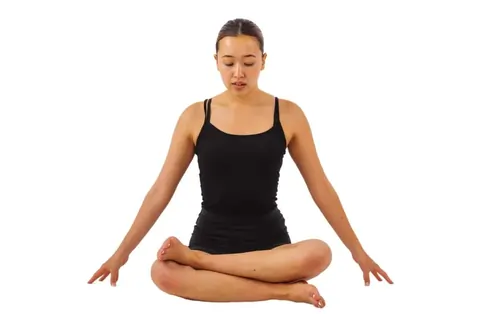
- How to do this: Sit on one edge of a thickly folded blanket, with your knees bent and your feet on the ground. Gently shrug your shoulders up and keep your spine upright.
- Slide the sole of your right foot under the left leg outside of the left hip, and place the outer leg on the ground. Then, place the left leg on top of the right. Make sure the left ankle is outward from the right knee. Therefore, the sole is perpendicular to the ground.
- If you have more hip flexibility, slide the right leg forward directly below the left to boost the challenge. Otherwise, surfing keeps the right heel in addition to the left hip.
- If your hip muscles are tight, you may find it uncomfortable to bring the ankle to the outer knee. In this case, sit with both shins crossed in Sukhasana.
- Push through the heels to extend your toes. Exhale and bend forward from your groins while maintaining a long front upper body.
- Make sure rather than to round forward from the abdomen. Place your hands on the ground, in front of your shins.
What are some typical errors you should avoid?
Additionally, there are some mistakes you should be aware of:
- Bouncing during a stretch can pull on tendons as well as muscle ending points rather than lengthening the muscle. The purpose of the stretch is to elongate and relax the muscles, and bouncing defeats that goal. Stretch slowly and smoothly.
- Pressing Down Forcefully – During the butterfly stretch, do not press down with excessive force. Similar to bouncing, this can put additional strain on the tendons, insertion points, as well as ligaments, increasing your risk of injury or overstretching.
- Holding Your Breath: Do not hold a breath while stretching. As yoga instructs, the breath can help you stretch deeper. Inhale as you release, and exhale as you begin to perform the work.
- Attempting to stretch above the normal range of motion, failing to breathe during the stretching routine, as well as performing the exercises incorrectly can all cause more harm than good. Furthermore, if you’re sick or tired, don’t stretch; instead, prioritize your health for a proper routine.
What safety precautions do you need to take?
You should be conscious of some of these safety concerns:
- You will feel a stretch in your sartorius muscle, but there should be no pain. You should release the stretch if it aches.
- If you’ve had knee surgery, consult with your physical therapist about whether you should do this stretch.
- Never stretch into previously injured areas, such as fractures and strains.
Tips to Maximize the Benefits of Stretching the Sartorius Muscle
- To get the most out of stretching this important muscle group, begin with light exercises and work your way up to more difficult ones.
- For increased flexibility, use dynamic stretches that involve moving the joints, as well as static stretches that last at least 15 seconds.
- To get the most out of your stretch, keep your stomach muscles engaged.
- Furthermore, include regular static stretching as a component of a well-rounded workout/mobility regular to maintain muscle wellness and guard against injury in other parts of your body.
Conclusion
Stretching your sartorius muscles is a key component of any mobility routine because it promotes proper muscle function and flexibility. By incorporating stretching exercises like the ones listed into your routine, you can make the most of every session.
However, it is also important to keep in mind the typical errors that can be made while stretching and to always prioritize safety. By following these guidelines, you can enjoy the full benefits of stretching while also protecting yourself from injury.
What is a sartorius muscle strength exercise?
Sartorius strengthening exercises are an important exercise for improving leg power. If you perform this exercise regularly, you will notice many health benefits as well as improved performance in sports and other daily activities, as well as increased stamina and fitness.
The sartorius muscle is less well-known than the gluteus maximus, yet this ribbon-like muscle is heavily used. This is the body’s longest muscle, running from the outside of the hip to the inside of the knee. It is used daily for everything from jogging and walking to lateral slides and lunges. Almost every time you use your lower limb to walk, the sartorius muscle is involved. Combining these two actions lets you sit cross-legged, much like an old-fashioned tailor, which is why the sartorius is also known as the “tailor’s muscle.”
The medical advantages of sartorius muscle strengthening exercises.
- Improves the knee and hip range of motion.
- Helps to increase the strength of all lower limb muscles.
- This muscle is used while walking, cross-legged sitting, and jogging.
- Reduce the chance of sartorius muscle pain, strain, and injury.
There are various types of Sartorius muscle-strengthening exercises.
Since the sartorius plays a role in so many lower-limb behaviors, it is relatively simple to strengthen it with an established, well-rounded lower-limb routine. The sartorius muscle is activated every time you perform a squat or a lunge, as well as when you walk or jog.
Lateral Step-ups
How do I do it?
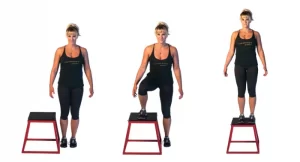
- Lateral step-ups on a bench or plyo box are a great compound exercise that works all of the key muscles in the lower limb.
- You can perform these exercises with absolutely nothing more than the weight of your own body, or you can use resistance-training equipment such as dumbbells or a loaded barbell to increase the difficulty.
- This exercise requires you to stand on one side of a stable box or bench.
- Bend your knees and hips on the leg nearest to the bench, then abduct your hip to step onto the box.
- Follow this exercise with your opposing leg to rise and stand on the bench. Reverse the movement while carefully stepping down from the box.
- Complete a set of 10 to 15 on one side before switching sides and leading the step to your next leg.
Lateral Band Walks
How do I do it?
- Band walks are an excellent exercise for strengthening all of the abductors of the hip. Wrap a small, wrapped resistance band near your legs, just above the ankles.
- To perform this exercise, stand with the feet hip-width apart, so the band is taut but not tight.
Flex your knees and hips slightly to achieve a “ready position,” and then take a few steps laterally to the left, dragging toward the resistance of the band. - Step your right foot toward your left foot, but don’t let the band loosen.
- Continue to step to the left for 15 to 20 steps before reversing the movement and taking 10 to 15 steps to the right.
- If the exercise is too difficult, place the elastic band above your knees rather than above your ankles.
Plie Squats
How do I do it?
- Set up the pile squat by abducting the hips, forming a broad base of support, as well as stepping laterally away from the midline. Then, rotate your hips externally, so that your thighs, knees, as well as feet, point to the sides of the room.
- From here, flex your knees as well as hips, lowering the glutes straight down while keeping the hips externally rotated so that your knees are aligned with your toes.
- The knees form an angle of 90°, press through the heels, and then return to the starting position.
- Perform between 10 and 15 repetitions of 2-3 sets.
- This exercise can be done with your body weight or with dumbbells or a barbell to add resistance.
Clam Exercise
How do I do it?
- The clamshell exercise appears simple, but when performed correctly, it activates the outer hips and puts your external rotators to work.
- Lie on your left side, with your bottom arm extended upward to help your neck and head.
Flex your hips and knees so that your thighs form a 90-degree angle with your trunk, and your knees are also flexed at approximately 90 degrees. - From here, ensure that your shoulders, hips, and knees are stacked and your body is perpendicular to the ground.
- Keep your big toes together, engage the core, and then externally rotate your top hip so that your knees open, as if you were a clam opening up.
- Rotate as far as you can comfortably with proper form, then reverse the motion by internally rotating the hip back to its original position.
- Do between 10 and 20 repetitions of two to three sets before moving on to the next side.
- If flexing your hips to 90 degrees isn’t comfortable as you rotate, lower them to a 45-50-degree angle.
- To make the exercise more difficult, wrap a small looped resistance band near your legs, just above the knees. As you externally rotate your top hip, you open your knees against the band’s resistance.
Cable Knee Raises
How do I do it?
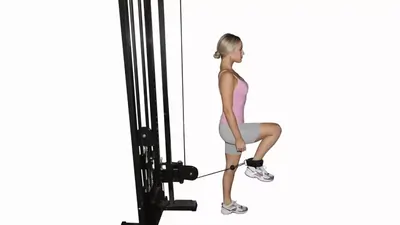
- The cable flexed-knee leg raise works the sartorius muscle from a standing position, requiring knee and hip flexion. Hip flexion happens when your thigh moves toward your stomach, whereas knee flexion occurs when your heel bends backward.
- After attaching an ankle cuff to your left ankle and selecting a low setting on the machine, stand with a back to the weight stack.
- Lift the foot slowly off the ground and pull the leg forward.
- Lift your knees until your thighs are parallel to the ground. Slowly lower your foot and repeat for a set of repetitions, then switch sides.
- Perform 2-3 sets of 10 to 17 repetitions.
Squats
How do I do it?
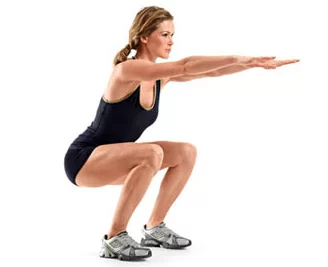
- Squatting involves hip and knee flexion, and it works your glutes, hamstrings, and sartorius.
- This exercise requires you to stand with your hips shoulder-width apart as well as lower yourself by flexing your knees.
- When your thigh is perpendicular to the ground, get back and repeat.
- Maintain a solid core and a straight back throughout.
- To increase the difficulty, place a barbell across your shoulders or hold dumbbells in your hands.
- Perform 2-3 sets of 10 to 17 repetitions.
Walking lunges
How do I do it?
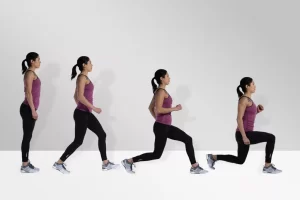
- This exercise targets the sartorius and lower limb muscles similarly to squatting but via a different movement pattern.
- Stand with your feet together and your hands on your hips, then take a long step forward with your left foot as well as flex your knees to lower your body down.
- When the left leg is parallel to the ground as well as your right knee is 1 to 2 inches off the ground, stand and then lunge forward with the left leg. For each set of repetitions, alternate between the legs.
- To increase the resistance, hold dumbbells at the sides or a medicine ball to your chest.
- Perform 2-3 sets of 10 to 17 repetitions.
Standing Abduction
How do I do it?
- The exercise targets the sartorius, gluteus medius, as well as gluteus minimus muscles in the buttocks.
- Standing on the right foot, extend your left leg slightly in front of you before raising it laterally in the air to your left side.
- Slowly lower it back down, repeat for two to three sets of 10 to 20 repetitions, then switch sides.
- Wear ankle weights to make the task more difficult.
Roman Chair Sit-ups
How do I do it?
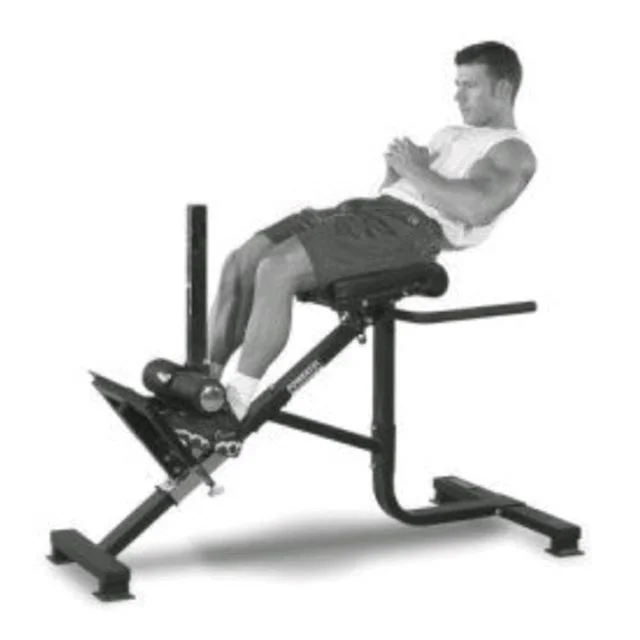
- This exercise requires you to lie on the back of the machine to do sit-ups, which will work your sartorius muscles.
- Sit on the upper padded support, then hook your feet under the lower padded support.
- Cross your arms over the middle of your chest or place your hands upon the sides of your head while bending backward until your trunk is perpendicular to the ground. Rise to a seated position as well as repeat.
- This exercise also works the rectus abdominis as well as the hip flexors.
- Do two or three sets of 10 to 20 repetitions.
Glute bridges
How do I do it?
- You must arrive supine lying. Flex your knees and move your heels closer to your hips.
- Place your arms by your sides and keep your feet on the floor.
- Keep your neck, shoulders, and head on the floor while raising your lower back and hips as high as possible.
- Squeeze your glutes as well as keep your core tight.
- Your shoulders, hips, as well as knees, should form a straight line.
- Perform two or three sets of ten to fifteen students repetitions.
Single Leg Squat
How do I do it?
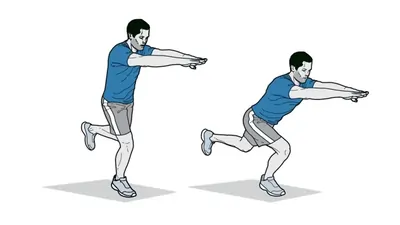
- For balance, stand with your feet shoulder-width apart as well as your arms extended straight out in front of you.
- Squat as low as possible, as if you were sitting in an imaginary chair.
- The knees should be directly above your ankles, while your thighs should be parallel to the floor.
- While in the squat, pause for a second as well as raise one foot off the ground.
- As you stand up, shift your elevated leg up and back.
- Perform two or three sets of ten to fifteen students repetitions.
Mountain climbers
How do I do it?
- First, get into the plank position with your hands together.
- Your hands should be directly below your shoulders, as well as your head, shoulders, hips, and heels should be aligned like an arrow.
- Alternate bringing your knees in toward your chest, slowly or quickly.
- Perform two or three sets of ten to fifteen students repetitions.
Low Lunge
How do I do it?
- Move the left leg forward and into a deep lunge. Place your right knee on the floor as well as your palms on either side of the left foot.
- Lift the right hand above your head as well as lean to the left.
- Hold for 2 seconds. Continue on the next side. Perform 2-3 sets of 10 to 15 repetitions.
Step-ups
How do I do it?
- This workout targets almost all lower-limb muscles, particularly the sartorius.
- This exercise can be performed on a stair, box, or raised plank.
- Simply stand with the feet set slightly apart in front of a raised surface.
- Place your right foot on the box as well as climb up. Stand with both feet on the box and step down with your left leg.
- To avoid injuries, exercise caution when stepping down.
- Repeat at least 15-22 times. You can also add weights or dumbbells to make the workout more challenging.
Pigeon pose
How do I do it?
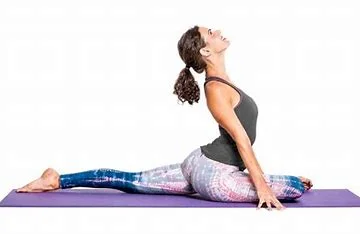
- Start both on your hands and knees.
- Bring your right knee in and flatten your leg in front of you, creating an angle of 45° with your knee on the outside as well as your foot on the inside.
- Straighten the left leg behind you.
- Lean forward across your bent leg, going as far forward as possible.
- Repeat on the opposite side.
Foam Rolling Exercises
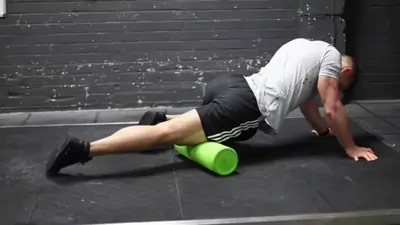
- You could also try foam rolling exercises to loosen up the sartorius muscle. Because the sartorius begins on the outside of the hip as well as covers around the front of the thigh before supplying just below the knee upon the inside of the lower leg, there are several ways to target this muscle with a foam roller.
- Roll on the hip creases: Lie prone on top of a foam roller, angled slightly in the hip creases between your right thigh and pelvis. To make this position more comfortable and control the amount of pressure you apply to the roller, prop yourself up with your forearms, hands, and other leg. Avoid hitting any bony points and instead rock back and forth in small, slow motions, gradually shifting the weight from side to side to identify all tight spots in the hip flexors that could benefit from a massage.
- Roll at an angle across the thigh: Place the foam roller at the top of your right thigh, with your body angled slightly upward so that the pressure is on the outside of the upper right thigh. Using your forearms, hands, and opposite leg to control the movement, slowly roll that at an angle down the length of your thigh, ending with the roller pressing against the inside of the thigh, close to the knee. Continue rolling along your thigh for 30-60 seconds before switching sides.
- Roll between your legs: Lie on your right side, held up on your right forearm, legs stacked on top of each other. Place a foam roller between the legs, close to the knee, as well as allow gravity to exert pressure on the insides of your legs. To target the muscles from different angles, slowly move your top leg forward and backward while rotating your hip internally and externally. Hold the roller in place for about 15 seconds before moving it up or down your thigh by about one centimeter to focus on the sartorius from another angle. The roller should always be close to your knee, but not directly on it.
When didn’t you do this exercise?
- If your healthcare provider advised you to rest.
- If you experience any numbness or pain, stop immediately or consult with your therapist.
- If your leg bone has recently fractured, avoid these exercises.
- If you have back problems, avoid weightlifting exercises.
FAQs
Where is the human body’s longest muscle located?
You might be sitting on the body’s largest muscle right now.
The sartorius is your body’s longest muscle, a thin, long muscle that runs down the length of the upper thigh, crossing the leg and ending at the inside of the knee. The sartorius primary functions include knee flexion, hip flexion, and adduction.
What causes the sartorius muscle to be tight?
Sartorius Muscle Injury Recovery: Effective Treatment Insights
Sartorius Muscle Tightness: Overuse, inactivity, and poor posture can all cause the sartorius muscle to tighten. Sartorius muscle tightness can cause discomfort and make it difficult to move your leg.
What exercises target the sartorius?
A trained person or a different physician may recommend the following exercises for strengthening the sartorius: Squats. Lunges. Stepping up
What nerve runs under the sartorius?
SAPHENOUS NERVE (L 3, 4)
The saphenous nerve is the more distal extension of the femoral nerve; it descends in the thigh with the femoral artery deep into the sartorius. It becomes subcutaneous at the posterior medial of the knee and follows the great saphenous vein down the leg
What activity involves the sartorius muscle?
(Sartorius Muscle Workout) Few people are aware that the sartorius muscle, which is responsible for the majority of lower body actions, is also our body’s longest. The muscle aids in jogging, walking, running, and even squatting.
What is sartorius and how does it function?
The sartorius has a unique function in that it can flex both the hips and the knees. The sartorius muscle originates from the anterior superior iliac spine, which also serves as the origin for the tensor fascia lata. It acts to flex the hip and externally rotate it.
REFERENCES
- Prajapati, N. (2023, April 18). Sartorius muscle stretching exercise Health Benefits, How to do? Samarpan Physiotherapy Clinic. https://samarpanphysioclinic.com/sartorius-muscle-stretching-exercise/
- Gupta, S., & F. (2020, February 27). Safe Exercises for Someone With Patellar Tendonitis. LIVESTRONG.COM. https://www.livestrong.com/article/508354-safe-exercises-for-someone-with-patellar-tendonitis/
- N. (2022, December 28). How to Stretch the Sartorius Muscle. Stretch.com. https://stretch.com/blog/stretch-the-sartorius-muscle/
- Bell, A. (2023, May 29). Sartorius: The “Cinderella” Hip Flexor. Tune up Fitness. https://www.tuneupfitness.com/blog/sartorius-the-cinderella-hip-flexor
- Tirgar, P. (2022, April 4). Sartorius muscle strengthening exercise: Health benefits, How to Do? Mobile Physiotherapy Clinic. https://mobilephysiotherapyclinic.in/sartorius-muscle-strengthening-exercises/
- Pt, B. S. (2023, September 15). Sartorius Muscle Pain: Everything You Need to Know. Verywell Health. https://www.verywellhealth.com/sartorius-muscle-anatomy-4685630
- Ascm-Cep, L. W. M. (2020, February 16). Sartorius Muscle Actions, Exercises, and Injuries. Verywell Fit. https://www.verywellfit.com/your-complete-guide-to-the-sartorius-muscle-4163822
- Prajapati, N. (2022, December 17). Sartorius muscle strengthening exercise Health Benefits, How to do. Samarpan Physiotherapy Clinic. https://samarpanphysioclinic.com/sartorius-muscle-strengthening-exercise/
- Sam, R. (2021, December 20). Sartorius muscle. Radiopaedia. https://radiopaedia.org/articles/sartorius-muscle
- Clinic, M. P. (2023, December 13). Sartorius stretching exercise: Health benefits, How to do? Mobile Physiotherapy Clinic. https://mobilephysiotherapyclinic.in/sartorius-stretching-exercise/
- Dunne, J., & Dunne, J. (2021, March 2). How to Strengthen the Sartorius Muscle. Kinetic Revolution – Run Strong, Injury-Free – Running Blog. https://www.kinetic-revolution.com/sartorius-strength-exercise/

